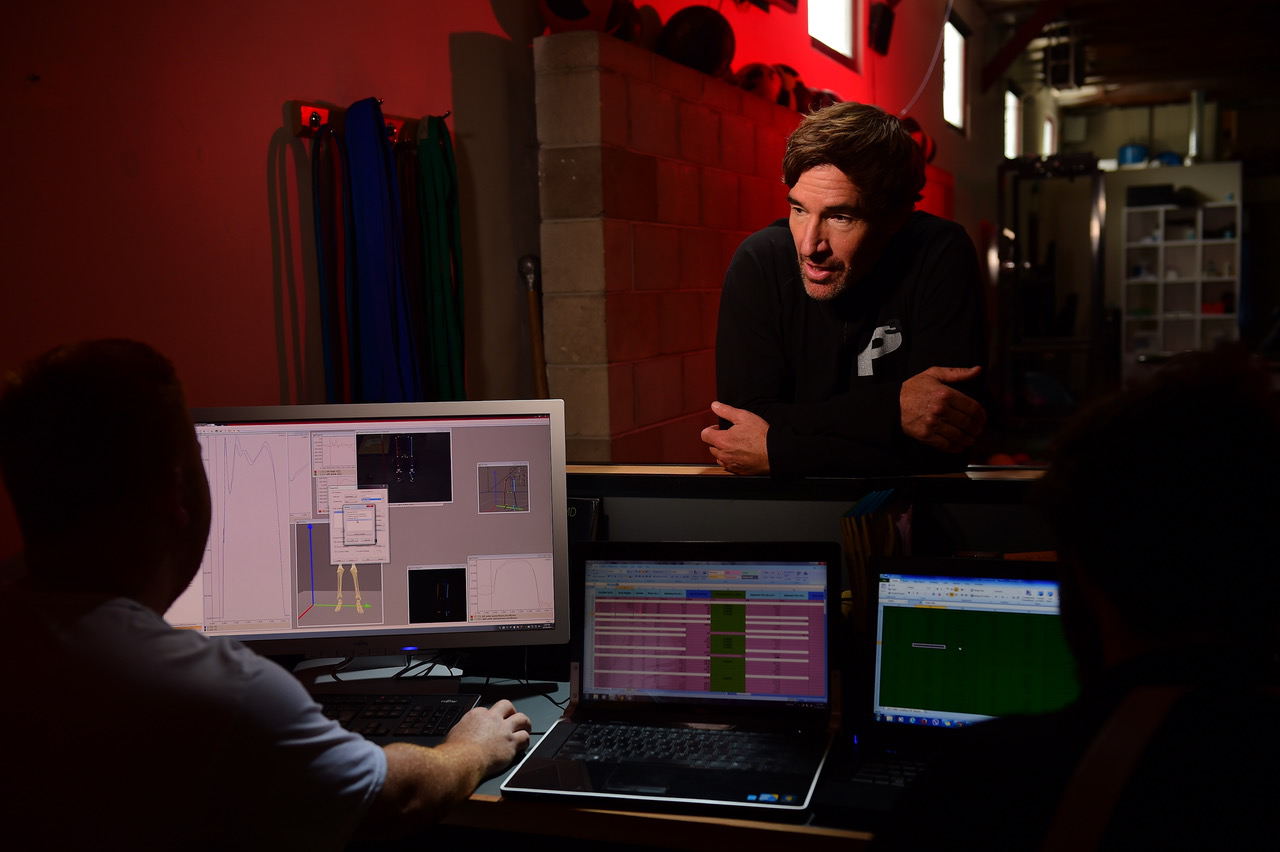Pop quiz: During their off seasons, what is the most-visited city in the world by professional athletes? If you answered New York, Los Angeles, or Rio, you’re wrong. The answer is Santa Barbara, and the reason they come here is Dr. Marcus Elliott.
Elliott runs a gym called P3 Applied Sports Science. He does it out of a nondescript little space buried deep in the Funk Zone. There, each day of the week, the who’s who of professional sports gather to work with Elliott and his dedicated group of instructors. Such world-class athletes as shooting guard James Harden, Ryan Braun of the Milwaukee Brewers, WNBA star Candace Parker, Belarusian tennis player Victoria Azarenka, football safety Eric Berry, and countless others all come to P3 to learn the details of how they move, how their bodies work, and how to take a data-driven approach to maximizing their career outputs.
As the first director of sports science in the NFL and MLB, Elliott is credited with major advances in the field. Much of his work is based on the rule that physics determines success in sports. It’s not about genetic lottery winners or freak injuries, but rather how athletes use their constituent parts to get the top possible performance from their bodies. And by studying the granular physics of athletes, Elliott and his team can predict on-field outcomes even before the competition begins.
“There’s Newtonian physics behind all sports,” he said, decked out in his trademark form-fitting T-shirt and sweatpants. “I’m not interested in how high an athlete jumps; rather, I’m much more interested in how and why they jump that way.”
Elliott was raised in the Bay Area in the 1970s. He was a bright student and the captain of his football and baseball teams. He had it all, and then his body betrayed him. He tore four ligaments on the football field, new players took his positions, and he was largely forgotten. He wanted to know how this could happen. And so, Elliott began a lifelong quest, starting at Harvard Medical School, of trying to understand how the human body functioned and applying that understanding to elite sports.

Elliott was lucky enough to be born into the perfect scientific age for such a quest. He worked with various computer systems that would give exact, real-time evaluations, and he partnered with computer programmers to measure specific patterns, utilizing machine learning and artificial intelligence.
It’s not easy to join the P3 program. An individual must get themselves to its sites in either Santa Barbara or Atlanta, with an ambition to play professionally or in college. Even though they work with some young local athletes, approximately 85 percent of their clients are either already playing for a professional team or are about to be drafted by one.
From the moment a player steps onto the floor, they are outfitted with 22 sensors, each placed on specific anatomical landmarks, from their feet all the way up to their back. After warming up, they undergo a series of vertical and lateral movement tests atop two force plates. They’re also filmed by 10 3D motion-capture cameras, each at a different angle. From these cameras, Elliott and his team can capture more than 5,000 data points, including joint-by-joint kinetic and kinematic information. The data is then compared to normative sets from their immense archive of other professional athletes, and the result is an amazingly detailed biomechanical model of how each athlete’s body works, where its injury risks lay, and how to optimize it.
“The paradigm has shifted,” said Elliott. “Most of the older training programs offered a ‘one size fits all’ approach, with no cause-effect model in place and certainly no data insight. They ignored a player’s specific needs, which are just so different from one body to the next.” He points at a future all-pro NBA forward leaping repeatedly into the air. “By assessing his personal biometrics combined with how that then affects the specific movements needed for his sport, we can help him maximize his potential.”
Elliott was recently named the Augustus Thorndike Visiting Professor at Harvard Medical School and Massachusetts General Hospital for a lifetime of groundbreaking advancements.





You must be logged in to post a comment.